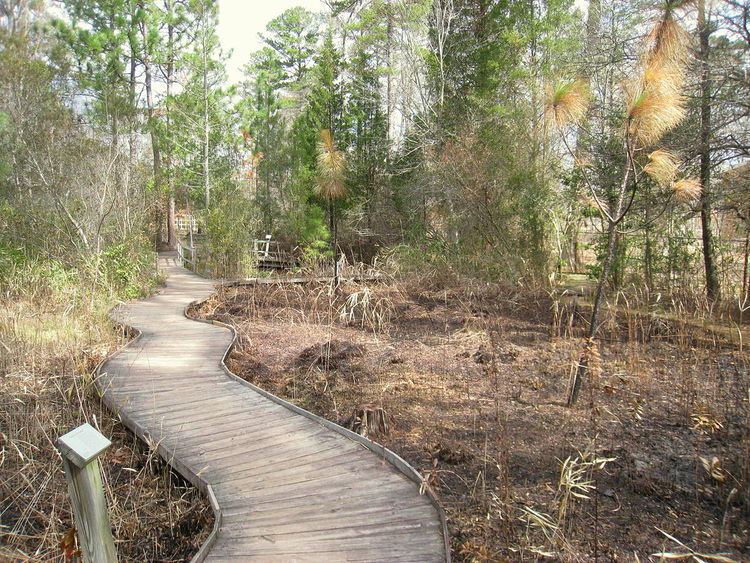Date opened 1951 Website www.ncbg.unc.edu Area 2.833 km² | No. of species 2,500 Opened 1951 Phone +1 919-962-0522 | |
 | ||
Land area 700 acres (1.1 sq mi; 2.8 km) Address University of North Carolina at Chapel Hill, 100 Old Mason Farm Rd, Chapel Hill, NC 27517, USA Hours Open today · 9AM–5PMFriday9AM–5PMSaturday9AM–5PMSunday1–5PMMondayClosedTuesday9AM–5PMWednesday9AM–5PMThursday9AM–5PMSuggest an edit Similar Coker Arboretum, Morehead Planetarium and Scie, Ackland Art Museum, Kidzu Children's Museum, Kenan Memorial Stadium Profiles | ||
North carolina botanical garden
The North Carolina Botanical Garden (about 700 acres (2.8 km2), plus 210 acres (0.85 km2) of nature preserves) is a botanical garden operated by the University of North Carolina at Chapel Hill in Chapel Hill, North Carolina. The primary goal of the Garden is to research, catalog, and promote the native plant species of North Carolina. Admission is free, and the Garden is open seven days a week, with special educational programs offered regularly.
Contents
The history of the Garden begins in 1903, when Professor William Chambers Coker began planting trees and shrubs on the central campus (now Coker Arboretum). In 1952, the Trustees of the university dedicated 70 acres (280,000 m2) forested for development of a botanical garden. An additional 103 acres (0.42 km2) were donated by William Lanier Hunt. Considerable additions and expansion of the Garden took place from the 1960s onward. The most recent expansion effort is a sustainable Visitor Education Center, designed by architect Frank Harmon.
Today the Garden comprises 14 collections and display gardens, containing some 5,900 accessions representing about 2,500 species of the 4,700 plant species known to be native or naturalized in North and South Carolina. Highlights of the Garden include:
The garden also contains a cabin in which playwright and professor Paul Green (1894–1981) performed most of his research and writing. It was moved to the garden in 1991.
